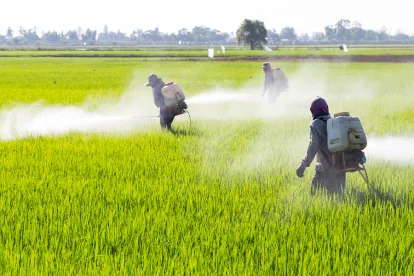On February 6, 2020, Corteva Agriscience (Corteva), announced it will discontinue all production of the organophosphate (OP) insecticide chlorpyrifos by the end of the year. Corteva and its corporate predecessor, Dow AgroSciences, have been the principal global manufacturers of chlorpyrifos. Corteva announced that its decision to stop selling chlorpyrifos was based entirely on financial considerations. This announcement came on the same day that Corteva had previously agreed it would end further sales of chlorpyrifos in California, and less than a week after the date the European Union (EU) ended all sales of chlorpyrifos in member states. These actions followed a number of prior actions taken by other national and state governments to ban or severely restrict chlorpyrifos. Corteva emphasized in its public statements that the science demonstrates that chlorpyrifos can be safely used, but that the company made a business decision based on the declining markets for the product. In an interview reported by the Washington Post, Susanne Wasson, Corteva's President for Crop Protection said, “It’s a tough decision for us to make, but we don’t feel like it’s viable going forward.” In other statements, Corteva noted that in the last ten years their share of the global chlorpyrifos market had declined from 75% to less than 20%.
Chlorpyrifos has been registered for use in the U.S. for over 50 years, but has become increasingly controversial in the dozen years since the Pesticide Action Network of North America and the Natural Resources Defense Council filed a petition in 2007 to cancel all registrations and revoke all tolerances for chlorpyrifos. Following a protracted court battle and a decision by the Ninth Circuit Court of Appeals to force the U.S. Environmental Protection Agency (EPA) to take final administrative action concerning the 2007 petition, EPA proposed near the end of the Obama Administration to revoke all existing tolerances for chlorpyrifos. A significant basis for this proposal was a controversial decision by a panel of EPA scientists that the default tenfold safety factor established by the Food Quality Protection Act (FQPA) for infants and children, which EPA had previously waived based on studies establishing a threshold for acetylcholinesterase (AChE) inhibition, should be reinstated.
The new EPA safety factor determination was based in large measure on epidemiology studies that reported an association between exposure to chlorpyrifos at levels below the presumed threshold for AChE inhibition and adverse neurodevelopmental effects in children. Many industry scientists disputed the scientific basis for this EPA determination because confounding exposures and methodological biases in the epidemiology studies may have influenced the reported association with neurodevelopmental effects and because the EPA determination made unprecedented use of epidemiology data. Beyond the effect on chlorpyrifos, the EPA decision will likely continue to be controversial because EPA included a similar safety factor determination for all OP pesticides, even though the mechanism responsible for the reported neurodevelopmental effects attributed to chlorpyrifos has not been identified and the other OP products were not studied in the epidemiology studies.
In the first year of the Trump Administration, EPA Administrator Scott Pruitt decided not to adopt EPA’s previously proposed tolerance revocation and instead to deny formally the 2007 petition, citing unresolved scientific issues. This reversal of course, however, was not accompanied by any new scientific assessment or by any explicit revision of the prior FQPA safety factor determination. Later, the California Department of Pesticide Regulation (DPR) decided to designate chlorpyrifos as a Toxic Air Contaminant, a decision that was noteworthy because it was based primarily on new toxicology studies that DPR stated reported neurodevelopmental effects well below the threshold for AChE inhibition. DPR deemphasized the epidemiology data relied on in the EPA safety factor determination in its decision. Although EPA later stated that it would address these new toxicology studies as part of an accelerated registration review process, there were intervening decisions by the EU and by California to ban new sales, which may have contributed to Corteva’s February 6, 2020, decision to cease chlorpyrifos production.
Commentary
The decision by Corteva to cease manufacturing chlorpyrifos reminds us that the decision to continue marketing any chemical substance cannot be based solely on the scientific data, but must also consider the regulatory climate and the economic viability of the product. For those of us with a long memory, the decision by Corteva is reminiscent of the decision nearly 40 years ago by the Dow Chemical Company to pull the plug on 2,4,5-T and silvex, after Dow had expended millions of dollars and many years of effort to contest an emergency suspension and subsequent cancellation of these herbicides. Dow made this decision even though it believed that the available data demonstrated the safety of those products.




 />i
/>i

